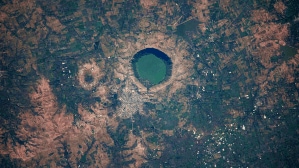China sets sail
While the Indian communists, with their antiquated world view, have completed their protests against India’s naval exercises in Bay of Bengal

While the Indian communists, with their antiquated world view, have completed their protests against India’s naval exercises in Bay of Bengal, the Chinese communists are proud to announce their growing naval engagement with a number of western nations, including Great Britain.
Earlier this week, two Chinese warships conducted a first-ever joint exercise with British aircraft carrier ‘Ark Royal’ in the Atlantic Ocean. This is the second time that Chinese warships have visited Britain. This engagement with the Royal Navy is part of a voyage that has taken the Chinese ships to St. Petersburg, Russia, and would also take them to Spain and France on their way back.
Meanwhile, two Chinese warships sailed out on Monday from the Qingdao port near Shanghai for a trilateral exercise with the navies of Australia and New Zealand. This is the first time the three nations are exercising together.If the Indian Left remains rooted in the verities of the Cold War, the Indian and Chinese navies are coping with a more complex multipolar world, where all great powers engage each other and have no intention to call anybody an enemy.
Panda diplomacy
If our Left can figure out the old-fashioned concept of balance of power, they should have little problem understanding why Australia, one of most loyal allies of the US, laid out the red carpet for visiting Chinese President Hu Jintao.
Although Hu was in Australia to attend the annual summit of the APEC, Canberra went out of the way to show-case the very special relationship it enjoys with China, which is all set to emerge as Australia’s largest trading partner this year. Canberra saw no contradiction in joining a summit with US President George Bush and Japanese Prime Minister Shinzo Abe — widely seen as aimed at China — and serenading President Hu around Australia at the same time. All nations in Asia acknowledge their growing stakes in economic and political engagement with China. But they would also like to hedge against a potentially domineering China in the future.
On his part, Hu came bearing gifts that included a promise to send two giant pandas to the Adelaide Zoo. He also traveled to resource rich western Australia, whose exports to China have reached US $14 billion.
To sustain its rapid economic growth, Beijing has put special emphasis on gaining long-term access to Australia’s natural resources.
PNG’s China card
The growing economic integration between China and Australia, however, does not remove all sources of political tension between the two. Canberra, for example, is increasingly concerned about China’s growing political influence in the South Pacific Islands that Australia considers its own ‘special patch’.
Papua New Guinea, for example, has begun to play the China card against Australia. As PNG, which was an Australian colony till 1975, turns north towards China, there is every reason for Canberra to be wary of
Beijing. Trade between China and PNG has touched US $500 million last year. China has invested nearly US $1 billion in extracting the rich nickel resources of the PNG. As flag follows trade, China is also exploring greater defence and security cooperation with PNG.
The same pattern is being repeated elsewhere in the South Pacific, as micro states fed up with the political pressures from Australia and other western nations turn to China for leverage. Beijing today has the largest number of diplomats in the region. It is estimated that nearly 3000 Chinese enterprises — state owned and private — are now operating in South Pacific. Most are in mining, logging, fishing, and tourism.
South Pacific race
Besides natural resources, China is also attracted by the strategic location of the South Pacific Islands. Some speculate that China is seeking to counter US naval dominance in the Pacific by establishing bases and facilities in the island states. The US was also surprised at China’s construction of a space facility in the islands of
Kiribati. Although the facility was shut down, it is evident that the South Pacific
Islands might have some importance in the unfolding space race between Washington and Beijing. Meanwhile, India which has had long-standing ties with many South
Pacific Islands, especially Fiji, appears to have forgotten them.
The writer is professor at the S. Rajaratnam School of International Studies, Nanyang Technological University, Singapore



- 01
- 02
- 03
- 04
- 05




























